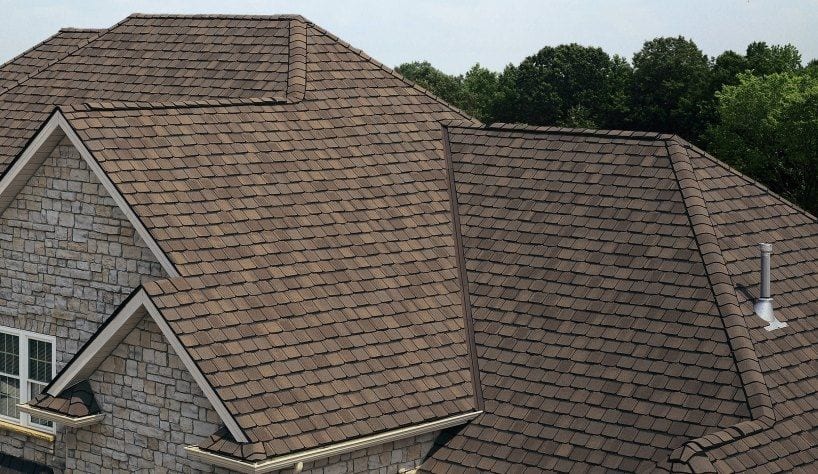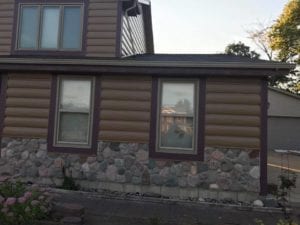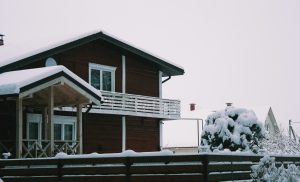You may not realize it, but your roof could be harboring unwanted growths like mold or mildew. It’s essential to identify these correctly, as mold tends to damage the structure beneath, while mildew remains on the surface. Not only does this distinction affect your roof’s integrity, but it also impacts your health. Understanding what’s growing up there and why can protect your home and well-being. Curious about the next steps for prevention and maintenance?
How to Tell What’s Growing on Your Roof
When examining your roof, look for dark, slimy patches to identify mold, which can penetrate materials and cause significant damage.
In contrast, mildew presents as lighter, powdery spots that remain mostly on the surface, posing a less severe threat.
To guarantee proper treatment and prevent health risks, assess the texture and color of the growth and consider professional evaluation if mold is suspected.
Signs You’re Dealing with Mold, Not Mildew
Identifying mold on your roof requires keen observation of several distinct characteristics.
Mold typically manifests in darker shades and has a slimy or fuzzy texture. It can penetrate roofing materials, signaling more critical issues than mildew.
Consider these signs:
- Color: Mold appears black, green, or brown.
- Texture: Slimy or fuzzy.
- Spread: Beneath shingles.
- Environment: Thrives in damp, poorly ventilated areas.
Mildew on the Roof: A More Superficial Threat
Mildew on your roof presents a less severe threat compared to mold, primarily because it remains superficial and doesn’t penetrate deeply into materials.
It appears as a light, powdery substance in shades like white or gray. Mildew thrives in warm, damp areas with poor ventilation.
Regular roof cleaning and ensuring proper ventilation are effective strategies for preventing mildew growth and maintaining your roof’s health.
Why It Matters: Health Risks and Home Damage
Understanding the difference between mold and mildew is critical, as their impact on health and home integrity varies considerably.
Mold and mildew present significant health hazards, with mold being the more severe threat due to its ability to infiltrate materials.
- Mold releases allergens and mycotoxins.
- Causes structural damage if left unchecked.
- Indicates potential leaks or poor ventilation.
- Requires immediate remediation to prevent spread.
Local Climate and Roofing Materials: What Makes Your Roof Vulnerable
You should consider how certain roof designs can trap moisture, making them particularly vulnerable to mold and mildew.
Adequate siding and attic ventilation are essential, as they help regulate temperature and humidity levels, preventing the conditions that encourage unwanted growth.
Roof Designs That Trap Moisture
While the architecture of your home plays a crucial role in its ability to combat moisture, certain roof designs inherently trap more water, increasing vulnerability to mold and mildew.
Consider these potential pitfalls:
- Flat or low-slope roofs encourage moisture accumulation.
- Overhanging trees create shaded, damp areas.
- Asphalt shingles retain moisture, inviting roof damage.
- Prolonged rainy seasons intensify moisture retention, fostering unwanted growth.
Siding and Attic Ventilation Also Play a Role
Although often overlooked, siding and attic ventilation are pivotal in safeguarding your roof from mold and mildew.
Effective siding ventilation allows heat and moisture to escape, preventing an environment conducive to fungal growth.
Poor attic ventilation traps moisture, raising humidity levels.
Regular inspections can identify and rectify these issues, especially in humid climates where porous materials are more vulnerable to mold and mildew proliferation.
Smart Prevention and Maintenance to Keep Growth Away
To effectively prevent mold and mildew from taking hold on your roof, start by ensuring ideal ventilation in your attic and roof spaces to reduce humidity levels.
Implement smart prevention and maintenance strategies to combat mold and mildew growth:
- Regularly clean your roof to eliminate debris.
- Trim overhanging branches to enhance sunlight exposure.
- Promptly repair leaks and damaged shingles.
- Install zinc-coated strips to deter fungal growth.
Need Help Spotting or Preventing Roof Mold in Wisconsin?
If mold or mildew is starting to show on your shingles, it may be time to consider a more permanent solution. Roof coatings from Heins Contracting add a protective layer that helps prevent future mold growth by sealing out moisture and reducing surface buildup.
Wisconsin’s damp climate creates ideal conditions for mold, but a professionally applied coating can help your roof stay cleaner, longer. It’s also a smart way to extend the lifespan of your existing roof without a full replacement.
Reach out to Heins Contracting for a custom coating consultation tailored to your roof and climate.




